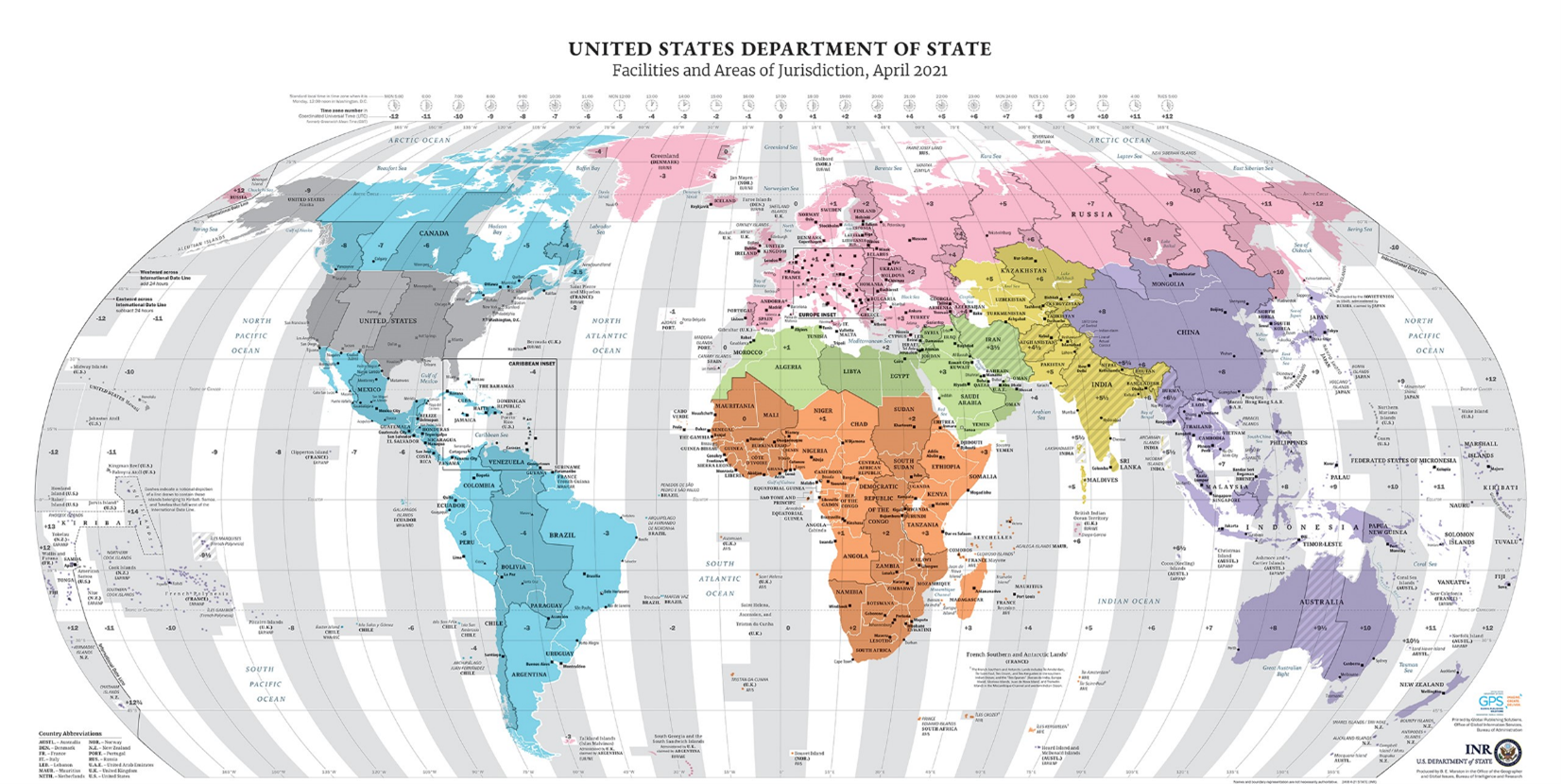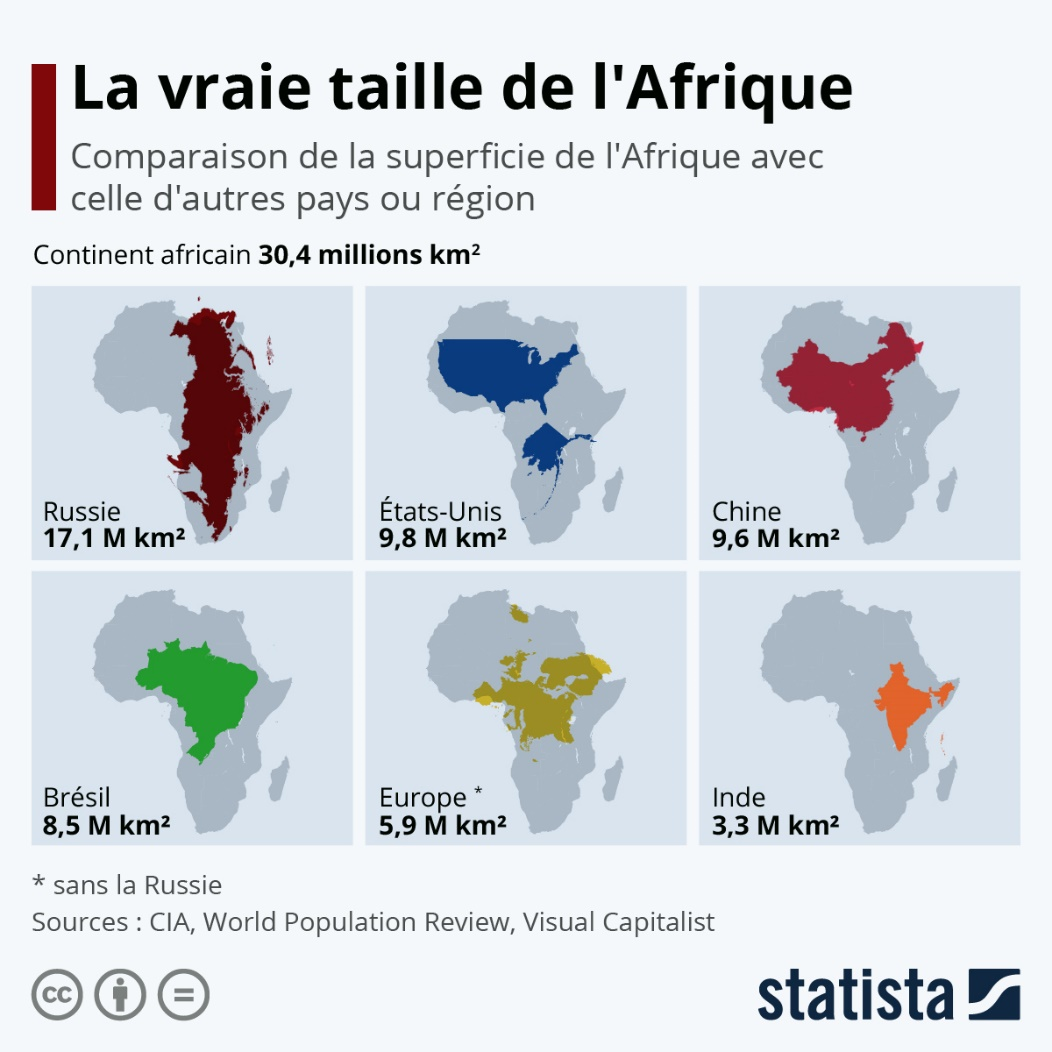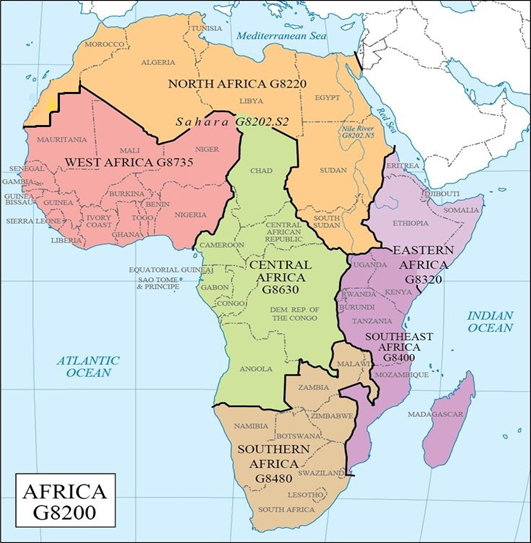Africa is a continent that covers 6% of the Earth’s surface and 20% of the land surface. Its area of 30,415,873 km2 with its islands makes it the third largest in the world if we count America as a single continent. Its population of 1.531 billion inhabitants ranks it as the second continent in the world after Asia and represents 18.5% of the world’s population in 2024.
The continent is bordered by the Mediterranean Sea to the north, the Gulf of Suez, the Red Sea, and the Gulf of Aden to the northeast, the Indian Ocean and the Mozambique Channel to the southeast, and the Atlantic Ocean and the Gulf of Guinea to the west.
Africa is bisected by the equator, resulting in diverse climates: hot and humid near the equator, tropical between the equator and the tropics, hot and arid around the tropics, and temperate in high-altitude regions. The continent experiences irregular rainfall, and in the absence of glaciers or aquiferous mountain systems, its only natural climate regulators are vegetation, especially forests, and proximity to the sea. Despite 60 percent of its land being arid, Africa remains an ecological treasure, often called the paradise of biodiversity. It is home to the world’s second-largest continuous forest massif, the Congo Basin Forest, which faces threats from overexploitation, deforestation, fragmentation, and biodiversity loss, pressures intensified by human activity and climate change.
In 2020, climate indicators showed a continued rise in temperatures in Africa, an acceleration in sea level rise, and more frequent extreme weather and climate events (e.g., floods, droughts, and their devastating effects). The rapid shrinkage of the last glaciers in East Africa, which are expected to melt entirely in the near future, also signals the threat of imminent and irreversible change in the earth’s natural systems.
The continent is considered the cradle of humanity, where the ancestors of Man appeared, then, about 200,000 years ago, modern man who then spread across the rest of the globe. The Sahara, the largest hot desert in the world, created a hiatus, leading to distinct historical developments between the north and the south. In the historical period, the civilization of ancient Egypt developed along the Nile, and sub-Saharan Africa saw its own civilizations emerge in the savannah areas of Africa, on the southern shore of the Mediterranean, and was influenced by the Phoenicians, Greeks, and Romans. From 3000 BC, Africa experienced the Bantu expansion. This was a population movement in several phases, generally oriented from the north, from the Grassland of present-day Cameroon, towards the south, to southern Africa, reached at the beginning of the Christian era. The Bantu expansion explains the current ethnolinguistic map of the sub-Saharan zone.
The Christian religion was established in Africa in the 1st century, mainly in Roman Africa in the north of the continent and then in Ethiopia. Islam began spreading across Africa, taking root on the east coast and in the north, reaching the northern edge of the sub-Saharan zone. At the same time, North Africa was Arabized. In sub-Saharan Africa, from the 8th century to the 17th century, powerful and rich empires succeeded one another. Towards the end of this period, in the 15th century, the Portuguese, followed by other European nations, established a slave trade on the west coast, the Atlantic slave trade, which was added to the intra-African slave trade and the oriental slave trade that was already rife on the continent.
The 18th century marked the beginning of European exploration, followed by the massive colonization of the continent between the late 19th and early 20th centuries. The slave trade ceased in the early 20th century, but Africa was almost entirely under colonial rule until the mid-20th century, which shapes the borders and economies of the countries concerned to this day.
Most states gained their independence between the end of the 1950s (Tunisia, Morocco, Ghana, etc.) and the mid-1970s (Angola, Mozambique, etc.). Independent Africa is essentially made up of “imperfect democracies” or even “authoritarian regimes,” and conflicts are numerous. Since South Sudan gained independence in 2011, Africa, including Madagascar, has had 54 sovereign states (not including SADR and Somaliland).
The countries of the continent have the highest population growth on the planet and a health situation that is improving significantly, though at a slower pace than in other developing regions.
Africa is based on a social organization based on extended family and ethnicity; there are about a thousand ethnic groups on the continent, which also has the highest linguistic diversity in the world with nearly 2,000 living languages.
Contemporary Africa is in a situation where the weight of demography is difficult to manage (unemployment, financing of education, etc.) Despite strong economic growth since the early 21st century, the continent remains the least economically developed. However, this growth has led to the emergence of a middle class with higher incomes and lower fertility rates.
Economically, intercontinental trade has been supported since ancient times, and, at the time of the great empires, the continent was the supplier of gold to the West and the East. Later, colonization led to a massive specialization of colonial economies, which became almost exclusively extroverted and devoted to the export of raw materials, minerals, and agricultural products to the metropolises. Knowing that it still has significant mineral and oil reserves, this situation persists in the 21st century, with, as a corollary, rentier states and oligarchies that capture income to the detriment of populations that have remained poor. Its place in current economic globalization is minimal, unlike in past centuries. However, some countries have initiated an economic turning point in the recent period thanks to economic diversification, the development of the tertiary sector, and “inclusive growth”.
For more information :
- https://fr.wikipedia.org/wiki/Portail:Afrique
- https://en.wikipedia.org/wiki/Africa
- https://africacenter.org/
- https://journals.openedition.org/etudesafricaines/
- https://etudes-africaines.cnrs.fr/
- https://journals.openedition.org/etudesafricaines/
- https://www.afdb.org/fr/documents-publications/economic-perspectives-en-afrique-2024



